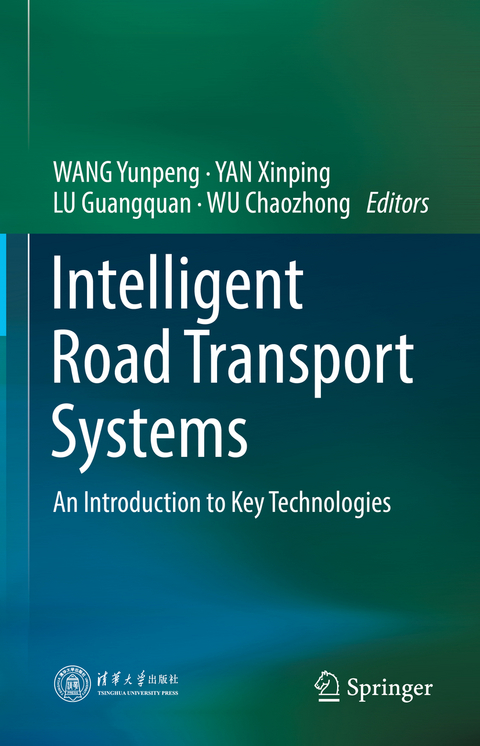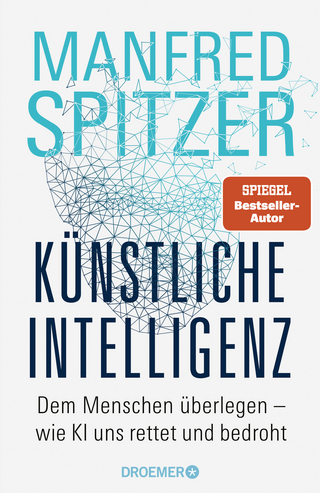
Intelligent Road Transport Systems
Springer Verlag, Singapore
978-981-16-5775-7 (ISBN)
This book chiefly focuses on the main technologies of ITS, examining them from four perspectives: “sense” (perception and management of traffic information, chapters 2 & 3), “transmission” (interaction of traffic information, chapter 4), “prediction” (prediction of traffic states, chapter 6) and “application” (intelligent transportation applications, chapters 6 through 10). Given its scope, the book can be used as a textbook for undergraduates or graduates, as well as a reference book for research institutes and enterprises.
This book emphasizes the use of basis traffic engineering principles and state-of-art methodologies to develop functional designs. It largely reflects the authors’ own experience in adapting these methodologies to ITS design. For example, the book addresses various forms of data collection, models used to predict and evaluate traffic states, comprehensive description in connected vehicles, applications for users and traffic managers, etc. The knowledge gained here will allow designers to estimate the performance differences among alternatives and gauge their potential benefits for functional design purposes. To gain the most from the book, readers should be somewhat familiar with the field of traffic engineering and interested in ITS.
WANG Yunpeng is a Professor and Vice President of Beihang University, Executive Deputy Director of the National Engineering Laboratory of Comprehensive Transportation Big Data Application Technology, and Director of the Beijing Key Laboratory of Vehicle-Road Collaboration and Safety Control, where he is in charge of the “Intelligent Transportation Technology Innovation Team,” the key innovation team for the Ministry of Science and Technology, dedicated to exploring basic theories and key technologies in the field of connected vehicles and vehicle-road collaboration. He has edited one “Beijing fine textbook” and published six monographs; he has won two second prizes at the National Science and Technology Progress Awards and four first prizes at the Provincial and Ministerial Science and Technology Progress Awards. YAN Xinping is an Academician of the Chinese Academy of Engineering, a Professor at Wuhan University of Technology, and Director of the National Engineering Research Center for Water Transport Safety. He is engaged in teaching and scientific research in the field of waterway traffic engineering, and has obtained pioneering engineering application results in the fields of marine power equipment wear diagnosis, navigation risk control, intelligent navigation, etc. He has won second prize at the National Technology Invention Awards and the Science and Technology Progress Awards, together with five provincial and ministerial first prizes. He has published six monographs, and the team he leads was selected as an “Excellent Technological Innovation Team in the Transportation Industry.” LU Guangquan is a Professor of Beihang University, and associate dean of School of Transportation Science and Engineering. His research fields include Driver behavior, Traffic Safety, Intelligent Transportation Systems, Intelligent Vehicle Infrastructure Cooperative Systems. He has taken charge of projects supported by the National High Technology Research and Development Program, the National Natural Science Foundation, and the National Key Projects in the Science & Technology of China, published more than 50 academic papers. WU Chaozhong is a professor and vice president of Wuhan University of Technology. His research fields include Traffic Safety, Intelligent Transportation Systems, Intelligent Vehicle Infrastructure Cooperative Systems and so on. He has in changed of over more than 10 projects such as the National High Technology Research and Development Program, the National Natural Science Foundation, and the National Key Projects in the Science & Technology of China; published more than 50 academic papers, obtained more than 20 authorized patents, more than 10 software copyrights, and 5 scientific research awards. He is also the director of the Youth Transportation Committee of the China Communications and Transportation Association, the member of the China Intelligent Transportation Association, the member of the National Intelligent Transportation System Standardization Committee, the editor in chief of the Journal of Traffic Information and Security.
Chapter 1 Introduction11.1 Overview of Intelligent Transportation System11.1.1 Basic concept of ITS 11.1.2 Historical evolution of ITS 21.2 Development of Intelligent Transportation System41.2.1 The evolution of ITS in US 41.2.2 The evolution of ITS in Japan111.2.3 The evolution of ITS in Europe 161.2.4 The evolution of ITS in China201.3 Trend of ITS 261.4 Structure of this book ReferenceChapter 2 Information Collection Technology in ITS272.1 Characteristics and classification of Intelligent Transportation Information Technology 272.1.1 Characteristics of Intelligent Transportation Information 272.1.2 Classification of Intelligent Transportation Information Technology282.2 Fixed traffic information collection technology 322.2.1 Information collection using loop detector322.2.2 Information collection using ultrasonic372.2.3 Information collection using video422.2.4 Information collection using mircrowave radar482.2.5 Comparison532.3 Mobile traffic information collection technology552.3.1 Information collection using floating car552.3.2 Information collection using UAV602.3.3 Crowdsourcing information collection technology672.3.4 Comparison75ReferencesChapter 3 Traffic Data Management Technology in ITS773.1 Data cleaning technology773.1.1 Importance of data cleaning773.1.2 The main content of data cleaning783.1.3 The main method of data cleaning823.2 Data storage technology873.2.1 Data format873.2.2 Data storage method943.2.3 Distributed storage963.3 Data mining and visualization993.3.1 Data query993.3.2 Data classification1033.3.3 Data clustering1053.3.4 Data association1103.3.5 Spatio-temporal data analysis1133.3.6 Geocoding1163.3.7 Location matching120ReferencesChapter 4 Information Interaction Technology in ITS1244.1 Overview of Vehicle Self-organizing Network1244.1.1 Wireless network and mobile network1244.1.2 DSRC, LTE-V and 5G communication1254.2 Networking and heterogeneous network selection1274.2.1 Basic knowledge of networking1274.2.2 Standardization and hierarchical model of computer network1294.2.3 Network switching method1314.3 Efficient transmission and adaptive routing method1384.3.1 Research of Mobile Ad-hoc Network Routing 1384.3.2 Classical routing algorithms1414.3.3 Bionic Ad-hoc network unicast/broadcast routing algorithm1464.4 Basic application and standard specification of traffic information interaction1624.4.1 Basic application of vehicle communication system1624.4.2 Interactive data sets, standards and interface specifications in application layer169ReferencesChapter 5 Traffic state analysis and prediction technology1745.1 Concept and connotation of traffic state1745.1.1 Concept of traffic status1745.1.2 Index system of traffic state1785.2 Discrimination and analysis of traffic states1825.2.1 Road traffic states discrimination1825.2.2 Traffic states analysis method1885.3 Basic theory and method of prediction1935.3.1 Overview of traffic state prediction1935.3.2 Analysis of traffic state prediction methods1985.4 Congestion prediction method and application2135.4.1 Congesion discrimination2135.4.2 Basic framework of Congestion state prediction method and application216ReferencesChapter 6 Information Service Technology in ITS2256.1 Connotation of ITISS2256.1.1 Concept of ITISS2256.1.2 Role of ITISS2286.1.3 Classification of ITISS2306.2 Key Technologies ITISS2336.2.1 The composition and working principle of ITISS2336.2.2 Theoretical Foundation of ITISS2366.2.3 Technical Foundation of ITISS2396.3 Advanced traffic information service system2506.3.1 Typical TISS and its key technologies2516.3.2 TISS in China251ReferenceChapter 7 Intelligent traffic management and control technology2837.1 Overview of ITMS2837.1.1 Concept and development status of ITMS2837.1.2 Framework and functions of ITMS2847.2 Typical ITMS and Application2877.2.1 Intelligent traffic monitoring system2877.2.2 Electronic police system2897.2.3 Intelligent Public Transport Management System2957.2.4 Parking guidance system3027.2.5 Emergency Management System3067.2.6 Typical urban ITMS and its application3107.3 Overview of Intelligent Traffic Signal Control System3187.3.1 Introduction to Traffic Signal Control System3187.3.2 Typical Intelligent Traffic Control System3237.3.3 Application of Intelligent Traffic Signal Control System in China343ReferencesChapter 8 Vehicle intelligent driving technology3608.1 Intelligent Vehicles3608.1.1 Introduction to Intelligent Vehicles3608.1.2 Classification of Intelligent Vehicles3618.1.3 Component of Intelligent Vehicles3638.1.4 Development of Intelligent Vehicles3688.2 Perception3728.2.1 Environmental perception 3728.2.2 Component of environmental perception system3738.2.3 Overall function of environmental awareness3748.2.4 Lidar3758.2.5 Millimeter wave radar3818.2.6 Visual perception system3898.3 Decision Planning Control389 8.3.1 Decision Planning Control System390 8.3.2 Decision392 8.3.3 Motion planning393 8.3.4 Vehicle control3968.4 Application of Emerging Technologies in Smart Cars396 8.4.1Deep learning397 8.4.2 Reinforcement learning400 8.4.3 SLAM404ReferencesChapter 9 Intelligent vehicle networking and cooperative vehicle-infrastructure technology4199.1 Introduction4199.1.1 From assisted driving to IoV4199.1.2 From IoV to Vehicle-Road Collaborative Technology4219.2 Intersection Signal Control Technology Based on IoV4229.2.1 Traffic flow prediction based on IoV data4229.2.2 Signal timing identification based on IoV data4269.2.3 Signal timing optimization based on IoV data4369.3 Route planning technology in the environment of IoV4469.3.1 Short-term prediction of road network conditions based on Iov data4469.3.2 Route optimization in IoV environment4479.3.3 Vehicle service route optimization in IoV environment4539.4 Intelligent control technology in vehicle-road collaborative environment4609.4.1 Car-following queue cooperative control based on vehicle-to-vehicle communication4619.4.2 Lane-changing control under vehicle-road coordination environment4679.4.3 Traffic Control of Intersections in Vehicle-Road Cooperative Environment474ReferencesChapter 10 Typical Intelligent Transportation Application System49210.1 Urban traffic state monitoring and index evaluation system49210.1.1 Introduction49210.1.2 System composition49510.1.3 Case study: Road Traffic State Index in Shanghai50210.2 Key commercial vehicle networked and jointed control system50410.2.1 Introduction50410.2.2 System composition & services50810.2.3 Case study:Driving behavior monitoring and early warning system51310.3 Intelligent Connected Vehicle Test and Evaluation System51710.3.1 Background and development51710.3.2 verification technology and test method52110.3.3 Case study:Shanghai International Automobile City closed test area (F-Zone)52610.4 Mega-event traffic organization and management system53210.4.1 Introduction53210.4.2 System composition53410.4.3 Case study:Transportation Organization and Management of Shenzhen Universiade540References
| Erscheinungsdatum | 27.05.2022 |
|---|---|
| Zusatzinfo | 26 Tables, color; 1 Illustrations, black and white; VIII, 608 p. 1 illus. |
| Verlagsort | Singapore |
| Sprache | englisch |
| Maße | 155 x 235 mm |
| Gewicht | 1081 g |
| Themenwelt | Informatik ► Theorie / Studium ► Künstliche Intelligenz / Robotik |
| Sozialwissenschaften ► Pädagogik ► Erwachsenenbildung | |
| Technik ► Bauwesen | |
| Schlagworte | Connected Vehicles • Intelligent traffic application • Intelligent Transportation System • Smart Driving • Traffic Data Collection • Traffic data management • Traffic information interaction • Traffic information service • traffic prediction |
| ISBN-10 | 981-16-5775-0 / 9811657750 |
| ISBN-13 | 978-981-16-5775-7 / 9789811657757 |
| Zustand | Neuware |
| Haben Sie eine Frage zum Produkt? |
aus dem Bereich


